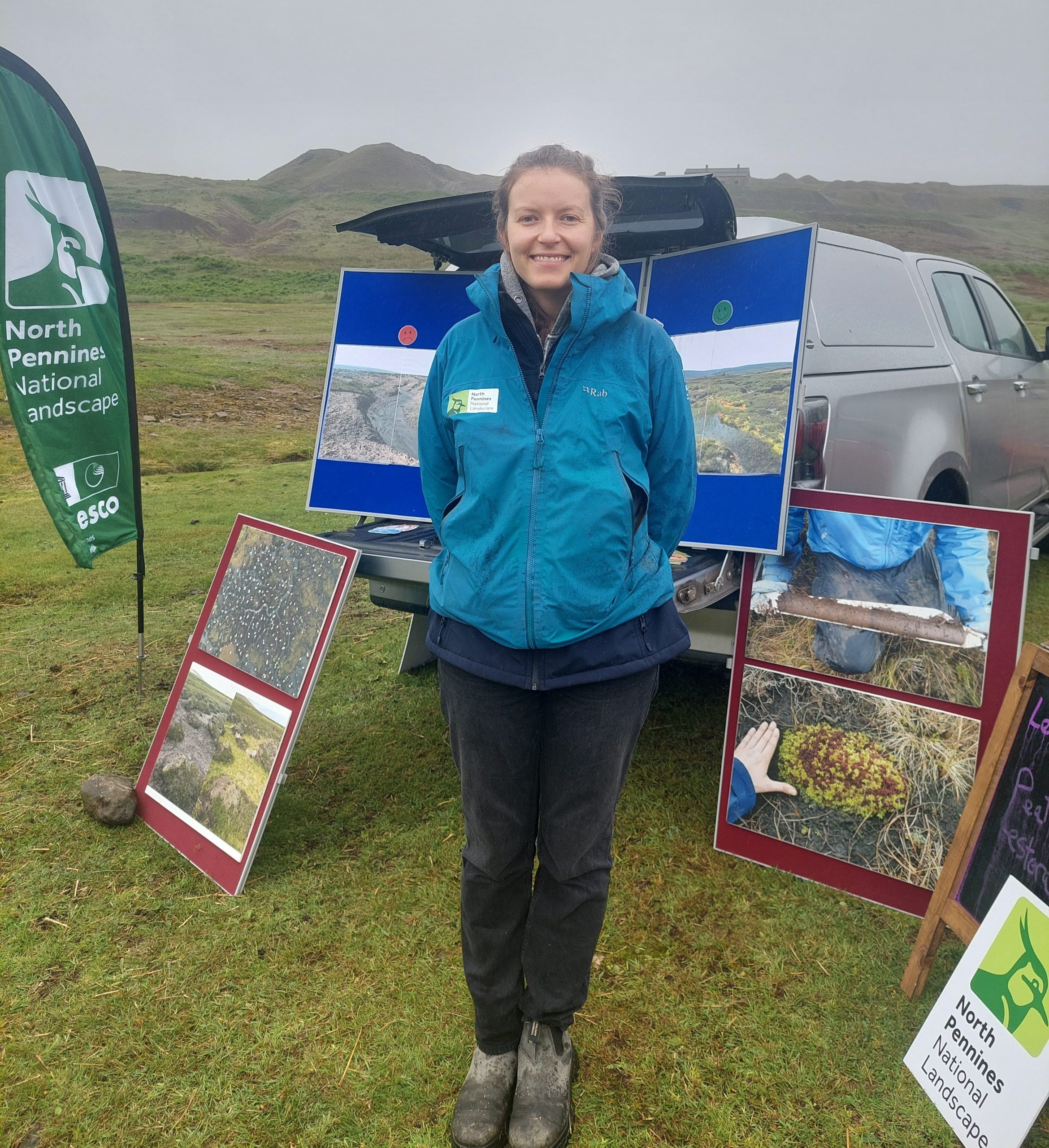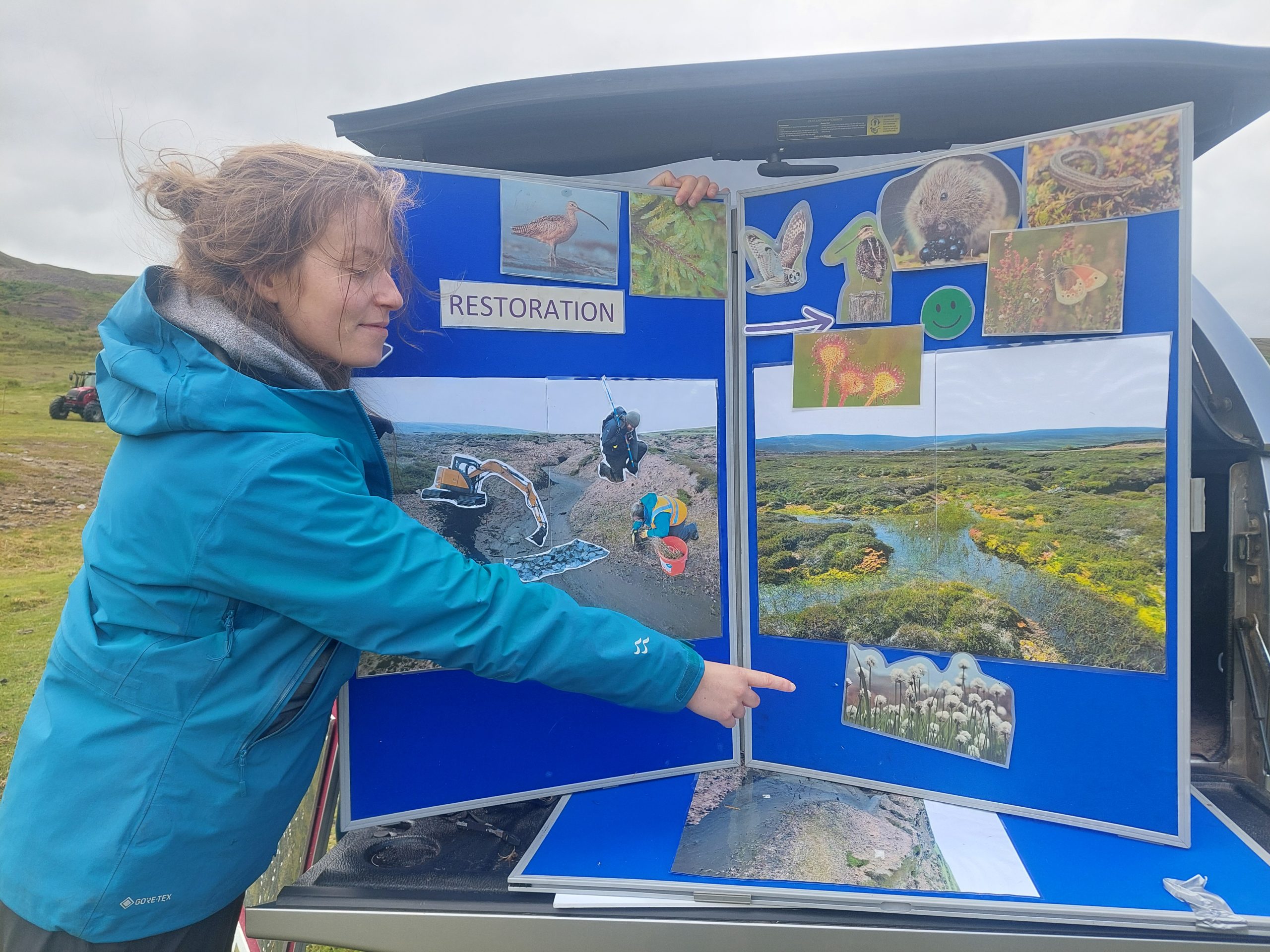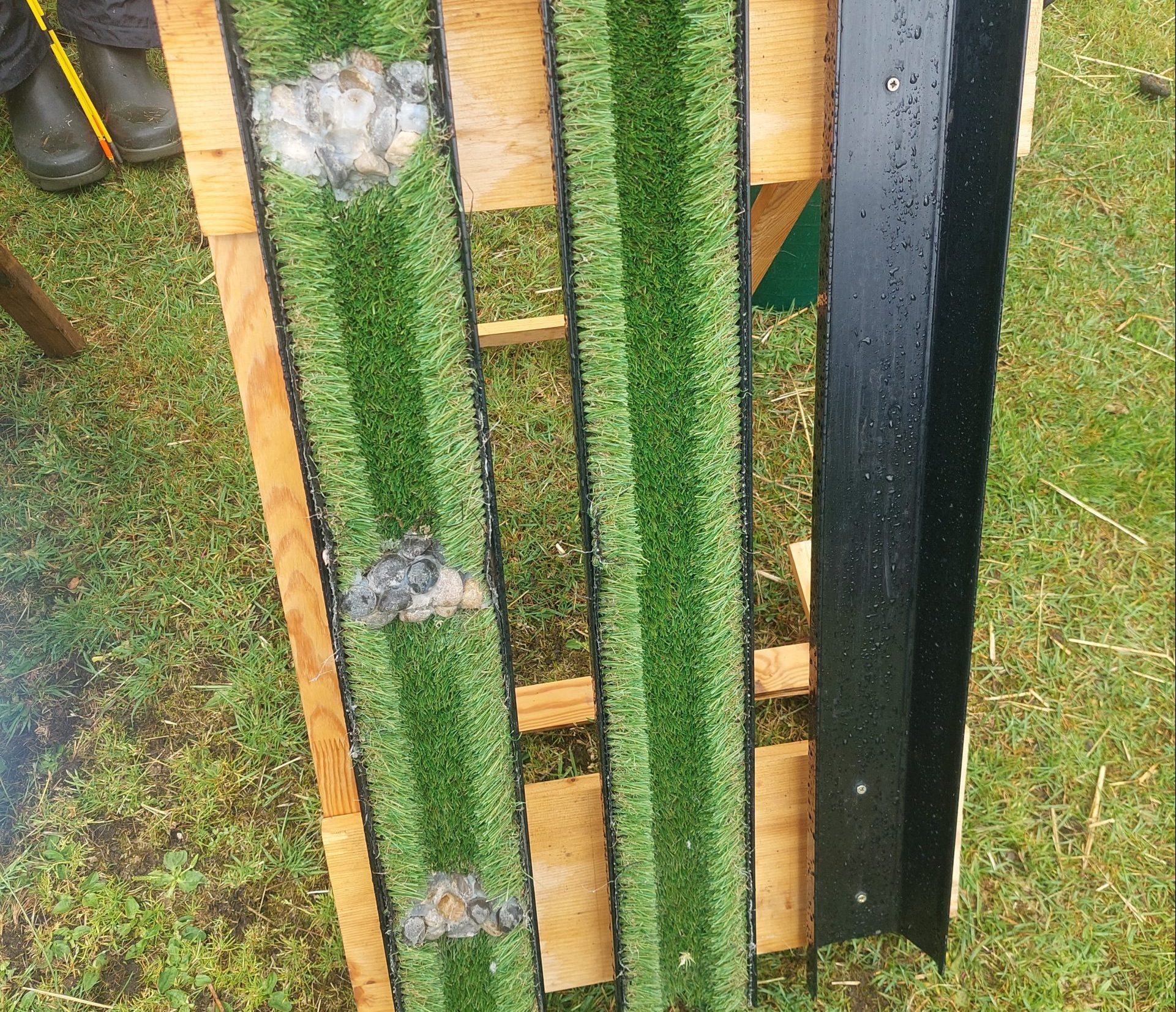News
Young people find out why restoring bogs is vital for people and the planet
28 July 2025
Young people find out why restoring bogs is vital for people and the planet
Our team once again had a great time talking to primary school pupils about the bog restoration work we do, as part of the annual Let’s Learn Moor educational project. Described as ‘the UK’s largest upland classroom’ and organised by BASC, and Countryside Learning, it teaches children about moorland conservation and land management at locations across the north of England.

During two days in June, over 300 young people came to the Let’s Learn Moor event hosted by Raby Estates, at a site in Upper Teesdale in the North Pennines. Our team set up an outdoor station along with other organisations such as Bowlees Education Farm, County Durham and Darlington Fire and Rescue Service, and upland gamekeepers from Raby Estate. The visiting school groups rotated between the organisations. At our station, they discovered how peat is formed and why it is important for people and the planet to restore bogs to a healthier state. The seven- to ten-year-olds enthusiastically answered questions about bogs and enjoyed sticking graphics and photos to corresponding boards representing a degraded bog and the problems they cause, the peatland restoration work of the North Pennines National Landscape team, and a healthy bog rich in biodiversity. They learnt that damaged bogs release vast quantities of carbon dioxide into the atmosphere, cause issues with water quality and can increase the risk of flooding downstream.

Some pupils had a go at pushing peat rods into the ground, which the team uses to measure peat depth. They were surprised to find out that sometimes the peat depth can be several metres. They also had fun taking part in demonstrations about the flow of water on bogs. Children poured jugs of water down model peatland channels. The flow of water was slower in the channel with stone dams and vegetation, and they could therefore see how peatland restoration interventions affect the water. Some classes also got the chance to hold sphagnum and loved having an even closer look at the peat-forming plant with hand lenses.

This opportunity meant that children from around the area could learn about the conservation work we do and how it benefits the environment. We hope that some may be inspired to consider careers in conservation in the future.







